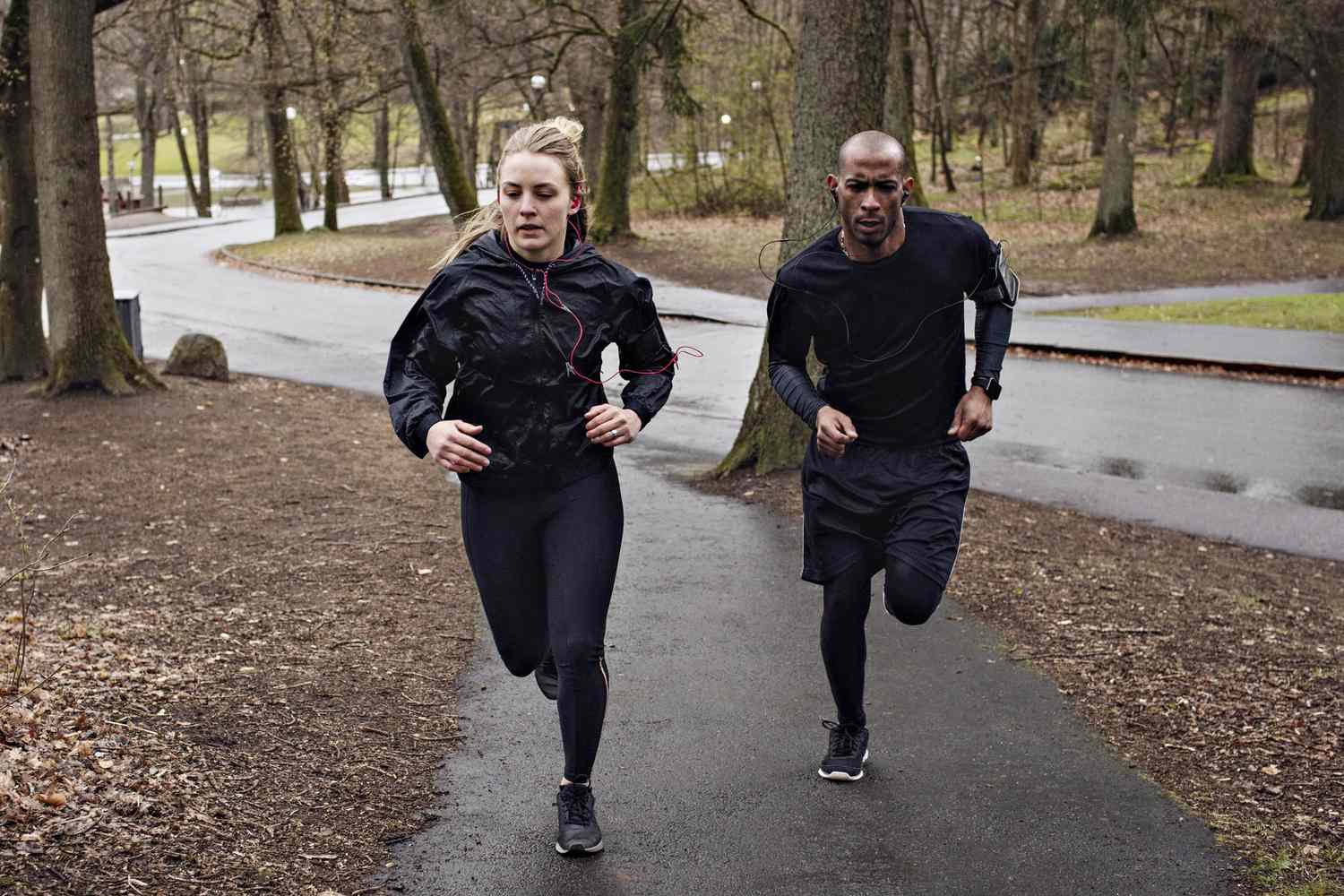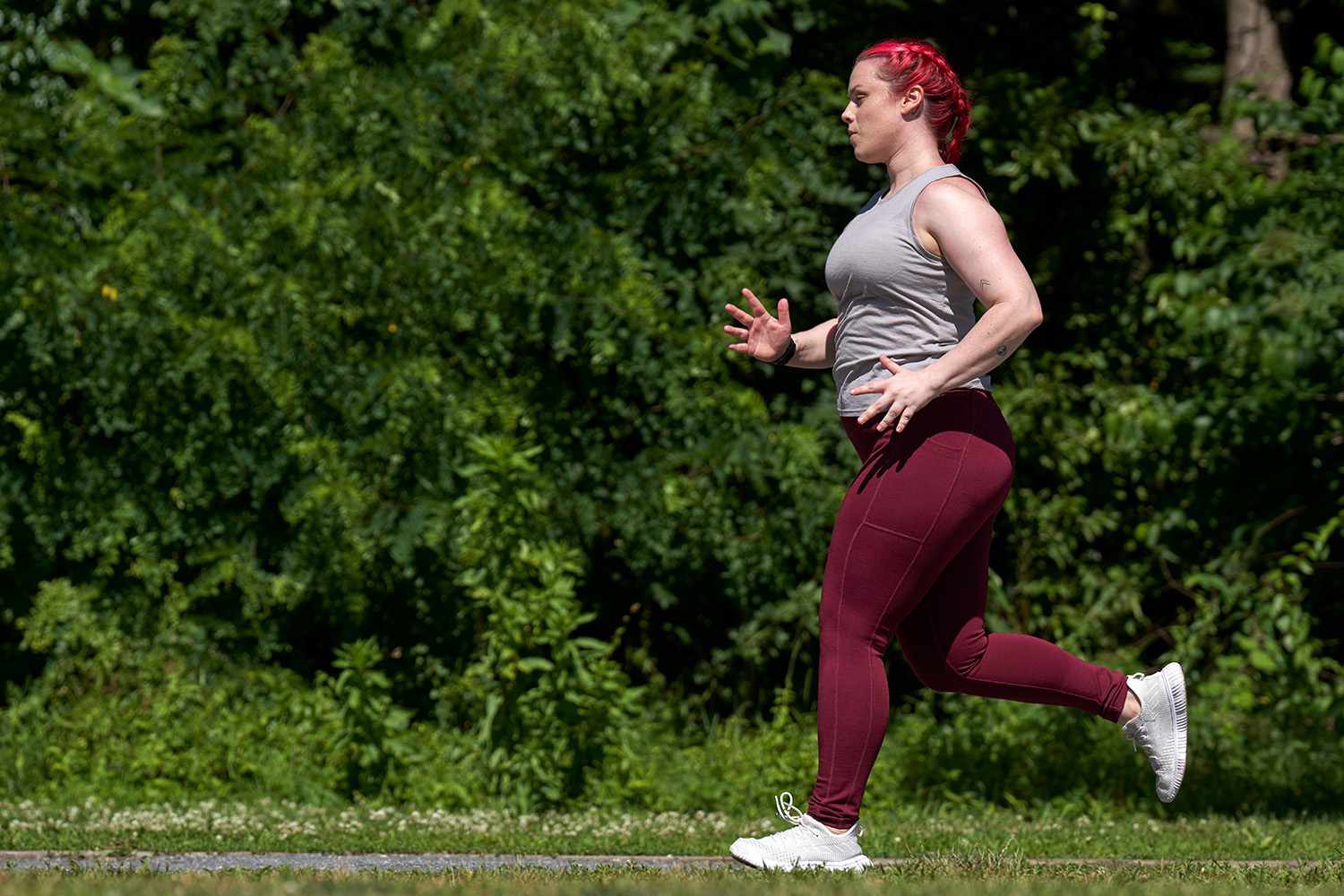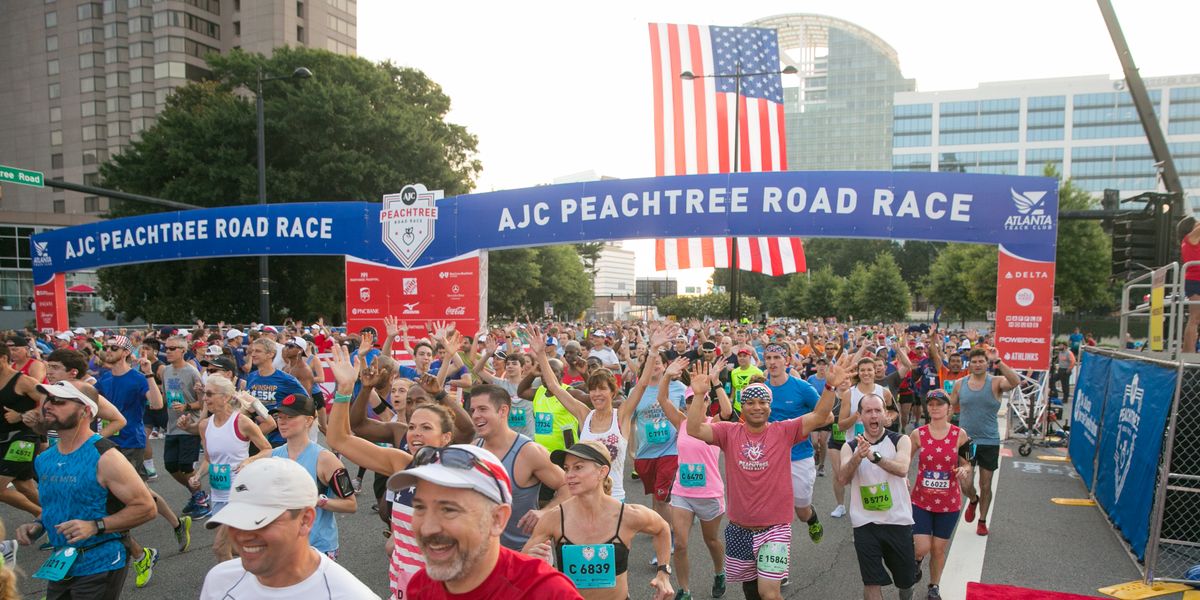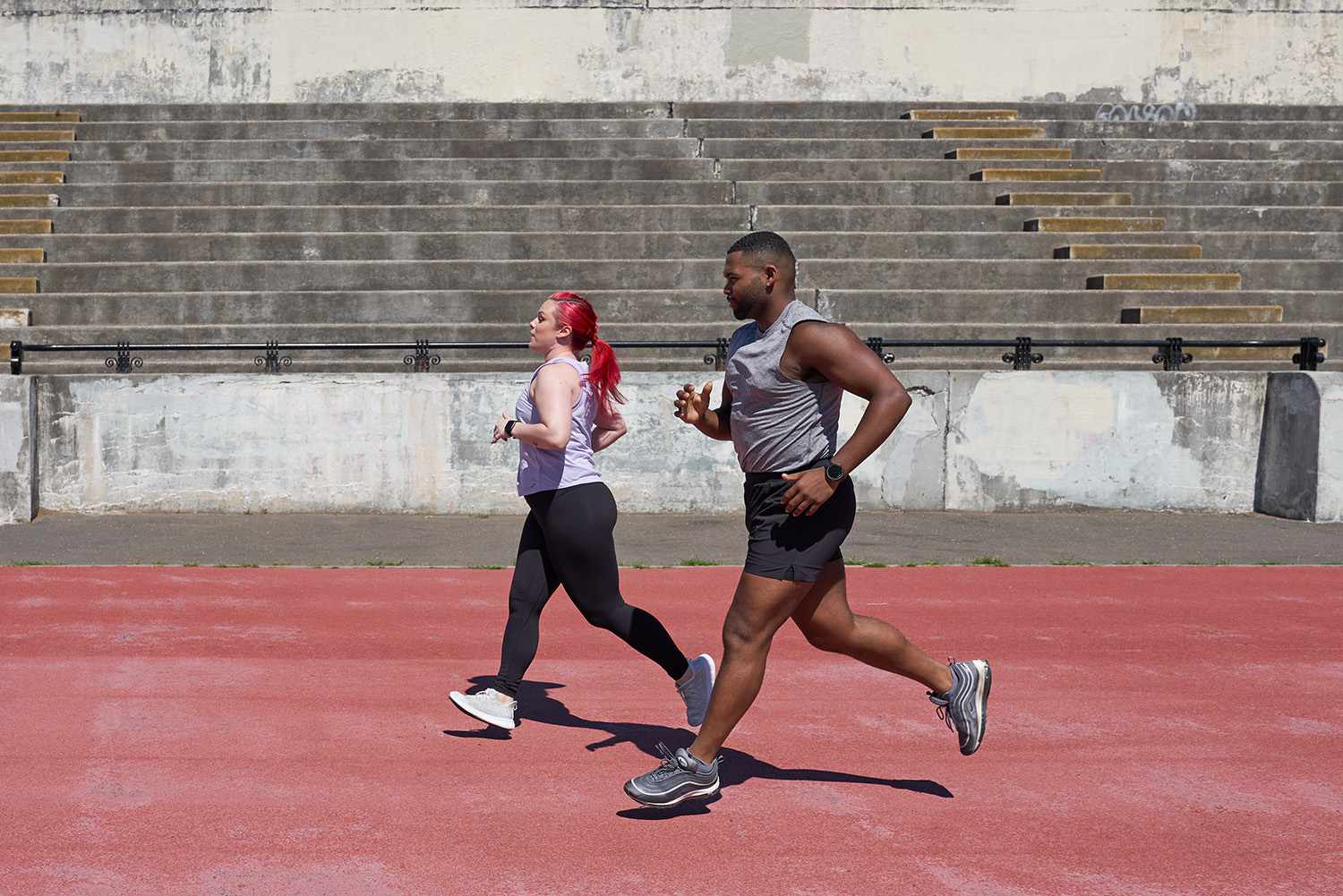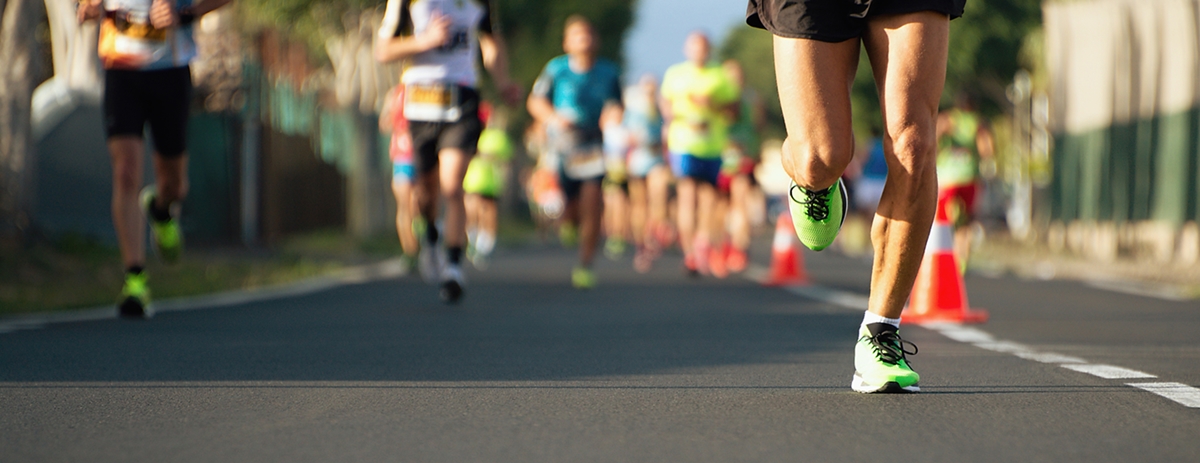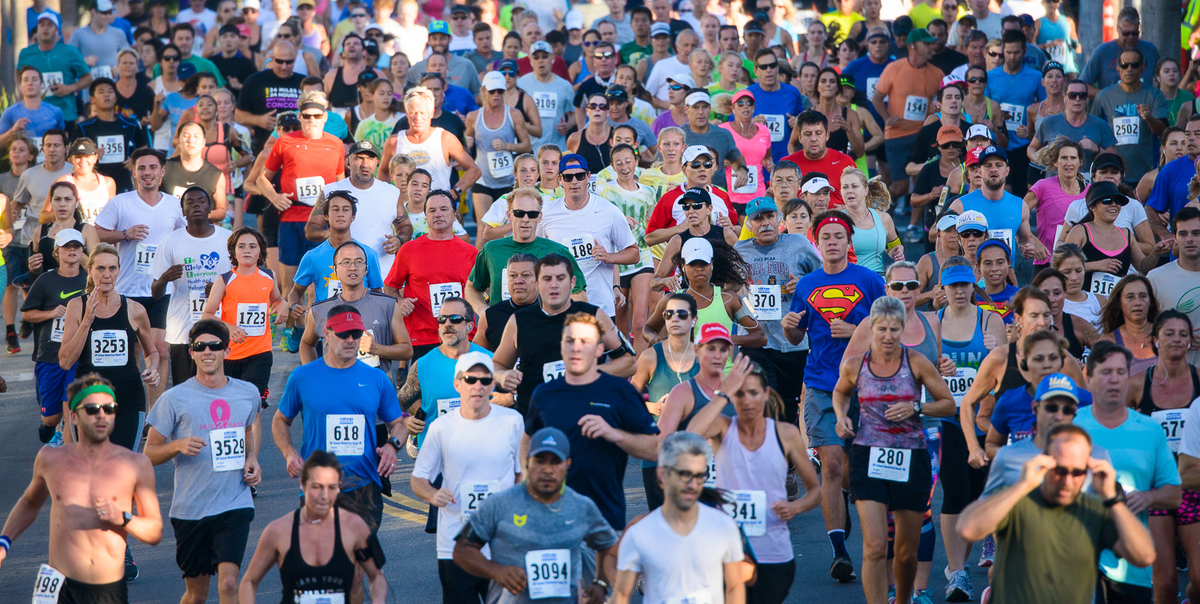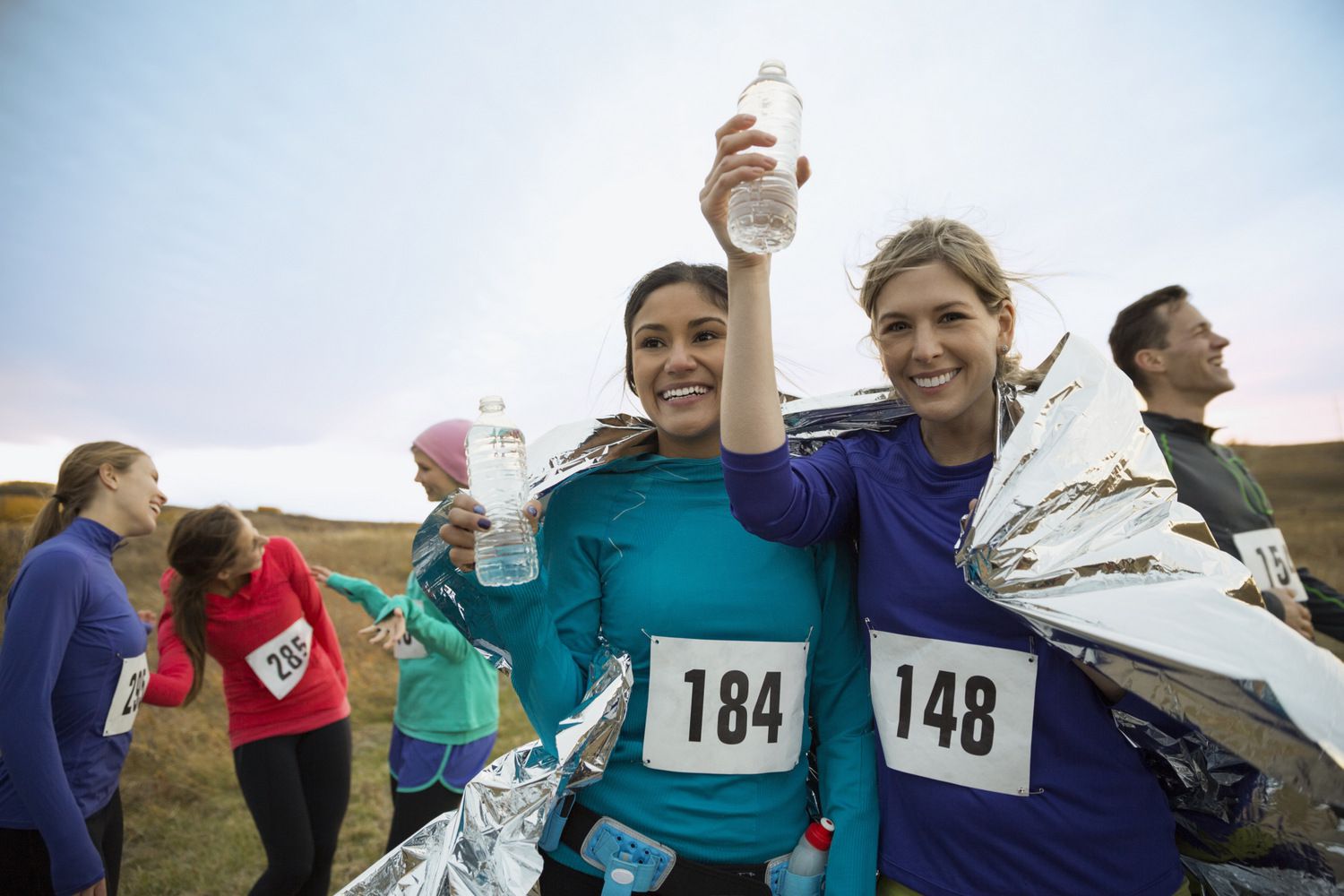

Featured
What Is The Record 10K Run
Modified: August 21, 2023
Discover the record-breaking 10K run featured in our latest article. Learn what it takes to achieve an impressive time and unlock your own potential
Introduction
Welcome to the exciting world of the 10K run! Whether you are an avid runner or just starting out, the 10K run is a popular and challenging distance that offers a perfect balance between endurance and speed. With its roots dating back to ancient Greece, this race has evolved to become a widely recognized and highly influential event in the world of running.
The 10K run, also known as a 6.2-mile race, has gained immense popularity due to its versatility and accessibility. It attracts a diverse range of participants, from professional athletes aiming to set world records to recreational runners seeking personal achievements. The race not only provides a competitive platform but also offers an opportunity for individuals to adopt a healthier lifestyle and connect with a passionate running community.
One of the main reasons for the 10K’s popularity is its manageable distance. It is a step up from the 5K, requiring greater endurance and stamina, but without the grueling training and recovery associated with longer races like marathons. This makes it an ideal choice for both beginners looking to challenge themselves and experienced runners looking to test their speed and performance.
The atmosphere of a 10K race is truly electric. As you line up with fellow runners, the anticipation builds, and the sound of cheering spectators fills the air. The race offers a unique blend of competition and camaraderie, pushing you to give your best while also enjoying the shared experience with other participants.
Beyond the physical challenges and personal achievements, the 10K run also provides a host of benefits. It is an excellent way to improve cardiovascular health, build endurance, and burn calories. Regular participation in 10K races can enhance overall fitness levels, boost mental well-being, and even strengthen the immune system.
Throughout this article, we will delve deeper into the history of the 10K run, explore the purpose and benefits of running this distance, examine world records, discuss factors affecting performance, and provide training strategies to help you achieve a fast 10K time. We will also showcase some of the top 10K races around the world, guaranteeing an exhilarating experience for every runner.
History of the 10K Run
The origins of the 10K run can be traced back to ancient Greece, where various running events were an integral part of the Olympic Games. In fact, the 10K distance was one of the standard races included in these ancient competitions. The significance of the 10K run in Greek culture is reflected in the historical accounts of early Olympic games and the mythological stories surrounding them.
In the modern era, the 10K run gained prominence in the late 20th century. It became an official event in the Olympic Games starting from the 1912 Stockholm Olympics, expanding its reach and solidifying its position as a respected race distance. Since then, the popularity of the 10K run has grown steadily, with countless races held worldwide each year.
The 10K distance strikes a balance between endurance and speed, making it appealing to a wide range of runners. This popularity has led to the establishment of numerous annual 10K races, both at the amateur and professional levels. These events showcase the diversity and passion within the running community, attracting participants from all walks of life.
Over the years, the 10K run has witnessed remarkable performances and record-breaking achievements. Runners like Haile Gebrselassie, who set multiple world records in the event, have pushed the limits of human potential and inspired generations of athletes. The 10K has also become a platform for groundbreaking moments in women’s running, as female athletes continue to challenge existing records and defy expectations.
Furthermore, the 10K run has become a staple in charity events and fundraising initiatives. Many races dedicate their proceeds to charitable causes, creating an opportunity for runners to make a meaningful impact while pursuing their passion for running. This combination of athleticism, community engagement, and philanthropy has contributed to the enduring legacy of the 10K run.
As the running landscape continues to evolve, the 10K remains a beloved distance that showcases the determination, perseverance, and spirit of the running community. Whether you are a seasoned runner aiming for a personal best or a beginner taking your first steps in the world of racing, the 10K run offers an exhilarating journey filled with history, excitement, and boundless possibilities.
Purpose and Benefits of Running a 10K
Running a 10K offers a multifaceted experience, encompassing both physical and mental benefits. Whether you are a seasoned runner or just starting out, the purpose and rewards of taking on the 10K distance are plentiful.
Firstly, running a 10K provides a clear goal and a tangible sense of achievement. The distance, equivalent to 6.2 miles, challenges your endurance and pushes you beyond your comfort zone. Crossing the finish line after completing a 10K race brings an immense feeling of accomplishment and boosts your confidence as a runner.
Participating in a 10K also offers the opportunity to improve your overall fitness. Running consistently helps strengthen your cardiovascular system, increases lung capacity, and enhances overall endurance. The training required to prepare for a 10K involves a combination of endurance runs, speedwork, and strength training, resulting in a well-rounded fitness regimen.
Another benefit of running a 10K is the potential for weight management. Regular running burns a significant number of calories, and the 10K distance provides a solid platform to engage in effective fat-burning workouts. By incorporating a balanced diet and training regimen, you can achieve and maintain a healthy weight.
Running a 10K also has numerous mental health benefits. It offers an excellent opportunity to relieve stress, improve mood, and enhance overall mental well-being. Engaging in regular physical activity, such as running, releases endorphins, also known as “feel-good” hormones, which can help reduce symptoms of anxiety and depression.
Furthermore, training for and completing a 10K fosters discipline, determination, and mental resilience. The commitment to a consistent training routine helps develop a strong mindset, teaching you to overcome obstacles and push through physical and mental barriers. Running a 10K can empower you with a sense of control, self-belief, and personal growth.
Running a 10K race also offers a sense of camaraderie and belonging within the running community. Whether it’s the shared excitement at the starting line, the encouragement from fellow participants during the race, or the post-race celebrations, a 10K event brings people together. The sense of community and support can be incredibly motivating and inspiring, creating lasting connections with like-minded individuals.
In summary, running a 10K provides a purposeful and enriching experience. The physical benefits, including improved fitness, weight management, and cardiovascular health, are complemented by the mental advantages, such as stress relief and improved well-being. The sense of accomplishment, personal growth, and community engagement make the 10K distance a rewarding and worthwhile endeavor for runners of all levels.
World Records in the 10K Run
The 10K run has witnessed some extraordinary performances throughout history, with runners continuously pushing the boundaries of human potential. Setting a world record in the 10K requires a combination of exceptional athleticism, strategic race planning, and optimal training. Let’s explore some of the most notable world records in the 10K run.
Starting with men’s records, one of the most impressive achievements is the world record set by Joshua Cheptegei of Uganda in 2020. Cheptegei shattered the previous record held by Kenyan runner Leonard Patrick Komon, finishing with a remarkable time of 26 minutes and 11 seconds. This achievement took place on a road course in Valencia, Spain, and solidified Cheptegei’s place among the greatest distance runners of all time.
In the women’s category, the world record for the 10K run is held by Joyciline Jepkosgei from Kenya. She set this astounding record during the 2017 Prague Grand Prix, crossing the finish line in an astonishing time of 29 minutes and 43 seconds. Jepkosgei became the first woman in history to break the 30-minute barrier in a road race, showcasing her exceptional speed, endurance, and versatility as a runner.
It’s worth noting that while these records represent the fastest official times, there have been numerous exceptional performances in unratified road races and track events. These performances, while not officially recognized as world records, further demonstrate the immense talent and potential that athletes possess.
The world records in the 10K run are a testament to the ongoing progression and evolution of the sport. Athletes relentlessly strive to surpass previous records, pushing themselves to new limits and inspiring future generations of runners.
It’s important to acknowledge the impact of advancements in training techniques, nutrition, and technology on these achievements. Runners now have access to cutting-edge training methods, sophisticated equipment, and scientific knowledge that contribute to improved performance and faster times.
As the world of running continues to evolve, it will be fascinating to witness the future records that will be set in the 10K run. With each passing year, athletes continue to challenge the notion of what is possible, elevating the sport to new heights and inspiring others to chase their own dreams of breaking records.
Factors Affecting 10K Performance
Achieving a fast and successful performance in a 10K run relies on a combination of various factors. From physical attributes to mental strength and strategic planning, these elements play a crucial role in determining an athlete’s performance. Let’s explore some of the key factors that can influence 10K performance.
1. Training: Consistent and purposeful training is essential for 10K success. This includes a combination of endurance runs, speed workouts, interval training, and strength exercises. A well-designed training program tailored to the individual’s needs helps build the necessary stamina, speed, and endurance required for a strong performance.
2. Fitness level: The overall fitness level of the athlete is a significant factor. This includes cardiovascular health, muscular endurance, and strength. A higher fitness level enables an athlete to sustain a faster pace for a longer duration and recover more efficiently.
3. Running economy: Running economy refers to how efficiently an athlete uses oxygen while running. Factors such as proper running form, effective stride length, and economical energy usage impact performance. Improving running economy through technique refinement and strength training can lead to faster 10K times.
4. Mental strength: Mental toughness and focus are crucial during a 10K race. Being able to cope with discomfort, maintain a positive mindset, and push through fatigue can make a significant difference in performance. Mental training techniques, such as visualization and positive self-talk, can help enhance mental strength.
5. Race strategy: Having a well-defined race strategy is essential. This includes pacing, knowing when to push harder, and when to conserve energy. Proper pacing helps avoid early exhaustion and sets the stage for a strong finish. Understanding the course layout, elevation changes, and potential challenging sections allows for effective race planning.
6. Environmental conditions: Environmental factors like temperature, humidity, wind, and altitude can significantly impact performance. Adapting training to different conditions and being aware of the weather on race day allows for better preparation and potential adjustments in strategy.
7. Nutrition and hydration: Proper fueling and hydration play a vital role in 10K performance. Adequate pre-race nutrition and hydration help ensure optimal glycogen stores and hydration levels. During the race, consuming energy gels or fluids at appropriate intervals can prevent energy depletion and maintain performance.
8. Genetics and natural ability: While not entirely in our control, genetics and natural ability can influence performance. Factors such as muscle fiber type composition, aerobic capacity, and VO2 max can contribute to an individual’s predisposition for running success.
9. Rest and recovery: Adequate rest and recovery are crucial for allowing the body to adapt and rebuild after intense training sessions. Balancing training with rest days, quality sleep, and proper recovery techniques, such as foam rolling and stretching, helps prevent overuse injuries and optimize performance.
In summary, optimizing 10K performance requires a holistic approach. Training consistently, developing a strong mental game, implementing effective race strategies, and considering external factors contribute to achieving the best possible performance. Understanding and working on these factors can help athletes maximize their potential and reach their goals in the 10K run.
Training Strategies for a Fast 10K
Preparing for a fast 10K requires a structured and targeted training plan that focuses on building speed, endurance, and race-specific fitness. Here are some key training strategies that can help you achieve a fast 10K time.
1. Establish a training schedule: Create a training schedule that includes a mix of easy runs, tempo runs, interval training, and long runs. This structured approach ensures a balanced training program and allows for gradual progression.
2. Build endurance: Include long runs in your training to build endurance. Start with shorter distances and gradually increase your mileage over time. This helps improve your cardiovascular fitness and prepares you to maintain a strong pace throughout the 10K race.
3. Incorporate speed work: Incorporate interval training and tempo runs into your training regimen to improve your overall speed and race pace. Interval training involves alternating between high-intensity bursts of speed and recovery periods, while tempo runs involve running at a sustained pace just below your race pace.
4. Practice race pace: Perform specific workouts at your goal race pace to familiarize yourself with the required effort level. This helps you develop a sense of pace control and confidence in maintaining your desired speed throughout the 10K race.
5. Include strength training: Incorporate strength training exercises into your routine to improve overall muscle strength and joint stability. Focus on exercises that target the lower body, such as squats, lunges, and calf raises, to enhance running economy and power.
6. Cross-training: Supplement your running with cross-training activities such as cycling, swimming, or elliptical training. This helps to vary the stress on your body, reduce the risk of injuries, and improve overall fitness.
7. Rest and recovery: Allow for rest days in your training schedule to give your body time to recover and adapt to the physical stresses of training. Adequate rest, quality sleep, and stretching or foam rolling can help prevent overuse injuries and optimize performance.
8. Nutrition and hydration: Proper nutrition and hydration are critical for optimal performance. Fuel your body with a balanced diet that includes carbohydrates for energy, protein for muscle repair, and healthy fats for overall health. Stay adequately hydrated before, during, and after your training sessions.
9. Practice race-day conditions: As you approach your race, simulate race-day conditions during some of your training runs. This includes wearing the same clothing, using the same hydration and nutrition strategy, and even incorporating race-like intervals or hill repeats. This helps familiarize yourself with potential challenges and prepares you mentally and physically for the actual race.
10. Mental preparation: Develop mental strategies to stay focused and motivated during the race. Visualization techniques, positive self-talk, and setting achievable goals can help you maintain a strong mindset and overcome any fatigue or obstacles that may arise during the 10K.
By implementing these training strategies and staying consistent with your training schedule, you can boost your performance and increase your chances of achieving a fast 10K time. Remember to listen to your body, adjust your training as needed, and stay motivated throughout your journey to the finish line.
Top 10K Races Around the World
The allure of the 10K run extends beyond its physical and mental challenges. It also offers the opportunity to participate in some of the most prestigious and captivating races around the world. Here are some of the top 10K races that attract runners from all corners of the globe:
1. Peachtree Road Race (Atlanta, USA): Held annually on July 4th, the Peachtree Road Race is one of the largest 10K races in the world. With its rich history and festive atmosphere, it draws over 60,000 participants each year, including elite runners and recreational athletes alike.
2. City2Surf (Sydney, Australia): Known as the world’s largest run, the City2Surf race takes participants on a scenic 10K route from Sydney’s CBD to the iconic Bondi Beach. The combination of breathtaking views, enthusiastic spectators, and an inclusive atmosphere makes it a favorite among locals and tourists.
3. Bolder Boulder (Boulder, USA): Held on Memorial Day, the Bolder Boulder race has become a beloved tradition in the running community. It features a challenging course through the streets of Boulder, Colorado, with live music, entertaining costumes, and a remarkable stadium finish.
4. Cherry Blossom Ten Mile Run (Washington D.C., USA): While technically 10 miles, the Cherry Blossom Ten Mile Run is a classic distance event that attracts participants from around the world. Runners are treated to the stunning beauty of cherry blossoms in full bloom as they navigate the course through the nation’s capital.
5. Midnight Sun Run (Reykjavik, Iceland): The Midnight Sun Run showcases the unique experience of running under the midnight sun in Iceland. Taking place in June, this race offers a surreal and captivating atmosphere as runners navigate the beautiful Reykjavik landscape with sunlight throughout the night.
6. Bay to Breakers (San Francisco, USA): Known for its vibrant and quirky atmosphere, the Bay to Breakers race in San Francisco brings together serious runners and costumed participants for a 10K extravaganza. The race route showcases iconic city landmarks and offers stunning views of the Golden Gate Bridge.
7. Blomstermila (Kristiansand, Norway): Blomstermila translates to “the flower mile,” and this race lives up to its name. Known for its scenic route through the picturesque city of Kristiansand, Norway, participants are surrounded by beautiful floral displays as they tackle the 10K distance.
8. Crim Festival of Races (Flint, USA): The Crim Festival of Races is an annual event held in Flint, Michigan, offering a range of race distances, including the 10K. The race has a rich history and is known for its challenging course, energetic atmosphere, and vibrant post-race festival.
9. The Great Ethiopian Run (Addis Ababa, Ethiopia): As the largest road race in Africa, the Great Ethiopian Run attracts runners from all over the world who gather in Addis Ababa to experience the joy and energy of Ethiopian running culture. The race route winds through the bustling capital city, offering a memorable and exhilarating experience.
10. Boilermaker Road Race (Utica, USA): The Boilermaker Road Race has gained a reputation as one of the premier 10K races in the United States. It features a challenging course, enthusiastic crowd support, and a thrilling finish at the iconic F.X. Matt Brewing Company. The race also boasts a vibrant post-race party, further adding to its appeal.
These are just a few examples of the top 10K races around the world, each with its unique charm and allure. Whether you’re an avid runner seeking a new challenge or a traveler looking to combine a love for running with cultural exploration, participating in these races can provide an unforgettable experience filled with camaraderie, competition, and adventure.
Conclusion
The 10K run offers a unique blend of challenge, excitement, and fulfillment for runners of all levels. From its rich history rooted in ancient Greece to the contemporary world records set by elite athletes, the 10K continues to captivate and inspire. Participating in a 10K race provides a host of benefits, including improved fitness, weight management, enhanced mental well-being, and a sense of accomplishment.
Training strategically is key to achieving a fast 10K time. A well-balanced training program that incorporates endurance runs, speed workouts, strength training, and rest days helps build the necessary physical and mental stamina. Additionally, considering factors such as race strategy, nutrition, hydration, and mental preparation can contribute to optimal performance on race day.
The 10K run also offers a wide array of vibrant and renowned races around the world. From the iconic Peachtree Road Race in Atlanta to the mesmerizing Midnight Sun Run in Reykjavik, each race encompasses its unique charm, cultural significance, and breathtaking landscapes. Participating in these races not only provides an opportunity to test your skills but also allows you to connect with the running community and immerse yourself in diverse cultures.
Whether you are aiming for a personal best or simply seeking a new physical and mental challenge, the 10K run offers a fulfilling and exhilarating experience. So lace up your running shoes, set your goals, and discover the joy of pushing yourself to new limits. The world of 10K running awaits, ready to ignite your passion for running and unlock your potential as a phenomenal athlete.
